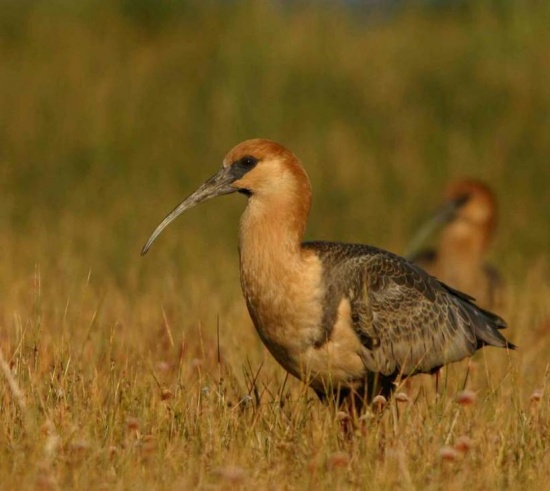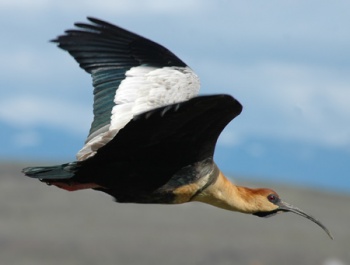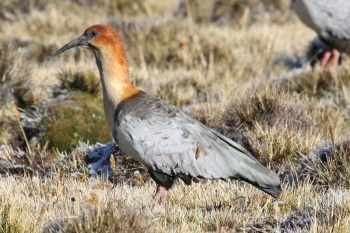| This article is incomplete. This article is missing one or more sections. You can help the BirdForum Opus by expanding it. |
- Theristicus melanopis
Includes: Andean Ibis
Identification
71–76 cm (28-30 in)
Immature: dusky neck streaking and scalloped wing-coverts
Similar Species
Buff-necked Ibis which has white in the wing and a buffish breast
Distribution
South America: found in Ecuador, coastal Peru, Bolivia, northern Chile and Argentina south to Tierra del Fuego.
Taxonomy
Subspecies
Two subspecies accepted which are sometimes considered full species:
- T. m. melanopis (Black-faced Ibis)
- T. m. branickii (Andean Ibis): Paler than nominate, with less ochraceous colouring on breast and neck
- Andes of Ecuador to extreme northern [[Chile]
With the latest update of Clements checklist, there is now a majority of checklists that recommend lumping these two forms in one species.
Habitat
Wet grasslands, open grassy and agricultural fields, salt lagoons, arid sandy areas.
Behaviour
Diet
The diet consists of insects, worms, frogs, salamanders and sometimes rodents. In addition they consume a lot of burrowing larvae. They will also take small chicks and mammals.
Breeding
Their nests can be found in woodland, on cliffs and in rocky gullies. The clutch consists of two eggs, which are incubated by the female for 28 days. They sometimes nest in colonies with Black-crowned Night-heron
References
- Clements, J. F., T. S. Schulenberg, M. J. Iliff, D. Roberson, T. A. Fredericks, B. L. Sullivan, and C. L. Wood. 2016. The eBird/Clements checklist of birds of the world: v2016, with updates to August 2016. Downloaded from http://www.birds.cornell.edu/clementschecklist/download/
- Avibase
- ArKive
- BF Member observations
Recommended Citation
- BirdForum Opus contributors. (2024) Black-faced Ibis. In: BirdForum, the forum for wild birds and birding. Retrieved 27 April 2024 from https://www.birdforum.net/opus/Black-faced_Ibis






